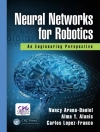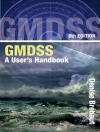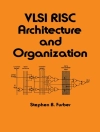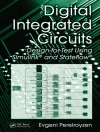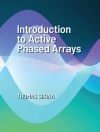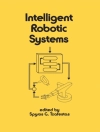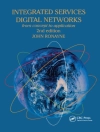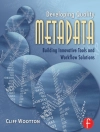This book presents the select proceedings of the Biennial Photonics Conference (Photonics 2023) held at IISc, Bengaluru on 5-8 July 2023. It covers topics across multiple areas of photonics, including established areas like optical communication and networks, quantum optics, non-linear and ultrafast photonics, nanophotonics, biophotonics and bioimaging, photonic integrated circuits, fibers and sensors, optical materials and fabrication techniques, optical metrology, and instrumentation, optofluidics, laser applications, optoelectronics. The book also covers emerging areas in photonics, such as THz photonics, structured Light, 2D materials, optomechanics, topological photonics, and AI/ML in photonics. The book will be useful for researchers and professionals interested in the broad field of photonics.
विषयसूची
Chapter 1:Accessible Soliton Breathers in Diffraction-Managed Media.-Chapter 2: High-Power Orbital Angular Momentum Modes Obtained by Phase-Locking Lasers in a 1D Ring Array.-Chapter 3: 1k W Narrow-Linewidth CW Fiber Laser Source for Spectral Beam Combining.- Chapter 4: Effect of Amplitude-Phase Coupling on the Formation of Dissipative Topological Defects in Coupled Lasers.- Chapter 5: Non-Hermitian Phase Transition in All-Dielectric Apodized One -Dimensional Photonic Crystals.- Chapter 6: Aberration Laser Beams with Controlled Autofocusing, Self-Healing and Intensity Distribution.- Chapter 7: Rb D_2-Line Polarization Spectroscopy for Laser Frequency Locking.- Chapter 8: An Experimental Study on Polarization Mode Dispersion Compensation Technique for a Monolithic CMOS-Integrated Silicon Photonics Transceiver.- Chapter 9: Gyrotropic Confinement in Gyromagnetic Medium-Encased Dielectric Structures.- Chapter 10: THz Characterization of Ge10Sb20Se70 Thin Film.- Chapter 11: Design and Performance Characteristics of Quantum Well Infra-Red Photodetectors.- Chapter 12 :Mid-Infrared Quantum Cascade Laser-Based Wavelength Modulation Spectroscopy for the Detection of Greenhouse Gases and NOx.- Chapter 13 : Accurate Determination of Excitonic Spectra of Monolayer Selenium – Pt S2 Van der Waals Heterostructure.- Chapter 14:Low Intensity Noise Continuous Wave Supercontinuum Generation in Standard Telecom Optical Fibers.
लेखक के बारे में
Varun Raghunathan received the Ph.D. degree in electrical engineering from the University of California Los Angeles, Los Angeles, CA, USA, in 2008, working in the area of silicon photonics. From 2009 to 2012, he was a Postdoctoral Scholar with the Department of Chemistry, University of California Irvine, Irvine, CA, USA, working in the area of nonlinear optical microscopy. He was a Research Scientist with Agilent Research Laboratories, working in the areas of Infrared micro-spectroscopy and applications of optical techniques to cancer imaging. He is currently an Associate Professor at the Department of Electrical Communication Engineering, Indian Institute of Science, Bangalore, India. His research group works in the areas of nonlinear optics, integrated photonics, resonant metasurfaces, optical communication, and quantum communications.
Jaya Prakash had graduated from Amrita School of Engineering with a Bachelors of Technology (B.Tech.) in Information Technology in 2010. Next, he had spent three years of his student life at the Indian Institute of Science (IISc), Bengaluru where he obtained my M.Sc. (Engineering) in computational sciences and Ph.D. (as a Microsoft Fellow) in optical image reconstructions/inverse problems in 2012 and 2014 respectively. Later, he moved to Munich as a Group Leader and Alexander von Humboldt Fellow at the Institute for Biological and Medical Imaging (IBMI), Helmholtz Zentrum München and at the Chair for Biological Imaging, Technical University Munich, where he worked till 2018. He has also worked closely with industries like Shell Technology Center-Bengaluru, i Thera Medical-Munich, and Tosibha Embedded Software Limited-Bengaluru. He joined the Department of Instrumentation and Applied Physics, IISc in 2019 as an Assistant Professor.
Ambarish Ghosh is an Indian scientist, a faculty member at the Centre for Nano Science and Engineering (Ce NSE), Indian Institute of Science, Bangalore. He is also an associate faculty at the Department of Physics. He is known for his work on nanorobots, active matter physics, plasmonics, metamaterials and electron bubbles in liquid helium. Ambarish received the Young Career Award in Nano Science and Technology for 2017 from DST Nanomission, India. The Council of Scientific and Industrial Research, the apex agency of the Government of India for scientific research, awarded him the Shanti Swarup Bhatnagar Prize for Science and Technology for his contributions to physical sciences in 2018. He received the Prof. Ramakrishna Rao Chair Professorship from 2017–2020. He was elected as Fellow of INAE (Indian National Academy of Engineering) in 2020, Fellow of Indian Academy of Sciences (IAS) in 2023, received P. K. Iyengar Memorial Award for Excellence in Experimental Physics 2022, and the Lam Research Unlock Idea Award in 2022.


